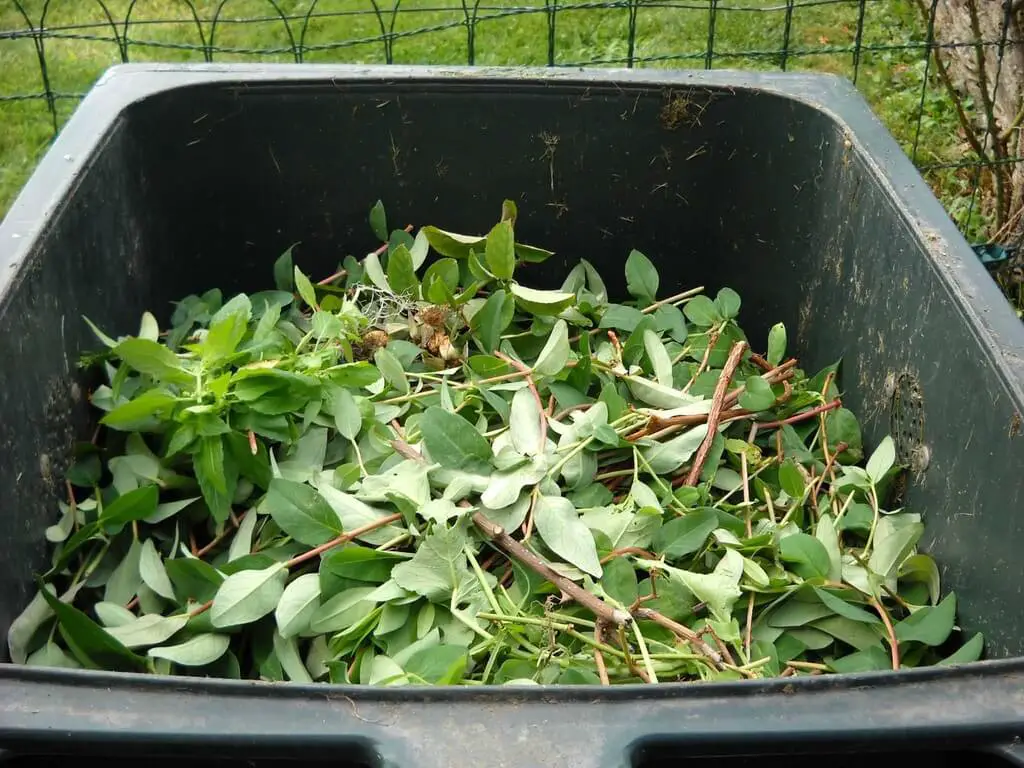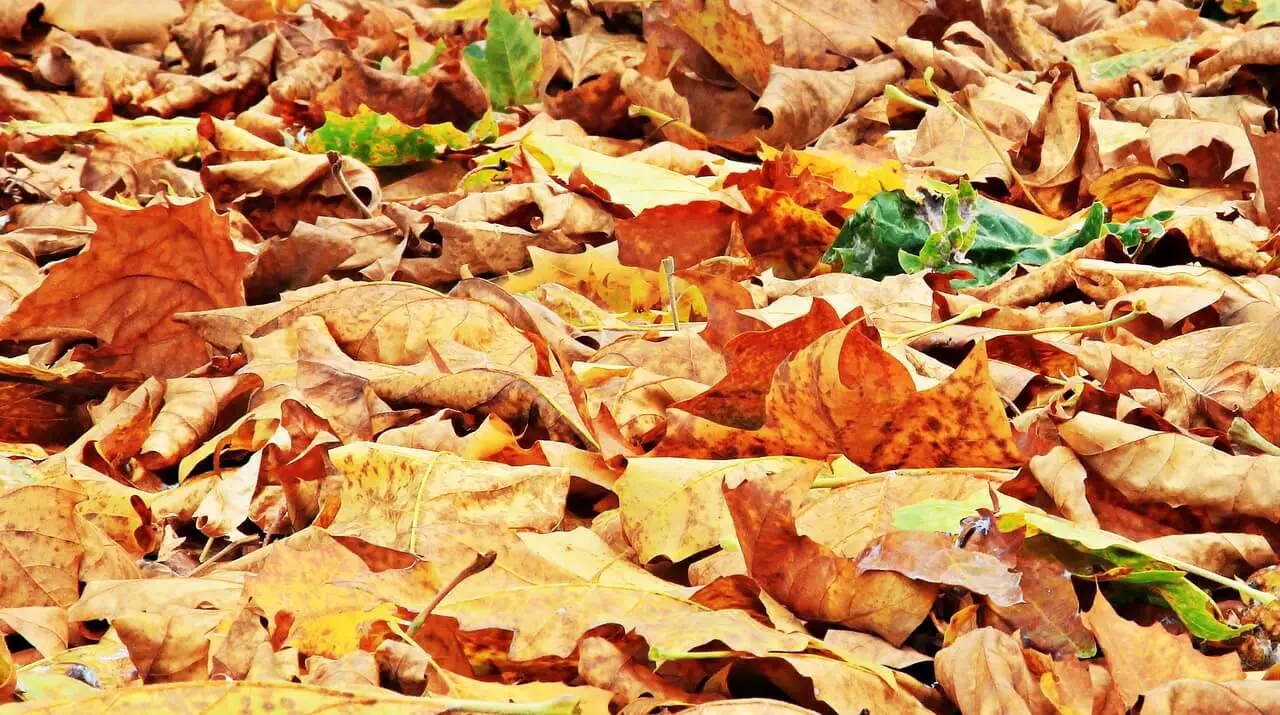Leaves are compostable. A leaf compost provides gardens with nutrients and contributes to soil amendment.
Our yards are full of fallen leaves during fall, and cleaning up can become a whole day job. A lot of you burn all this yard waste.
Instead, you can use these leaves in many other useful ways, including leaf composting.
Table of Contents
Can You Compost Just Leaves?
Composting leaves alone is known as leaf molding. Leaf molding is when you place leaves in compost, sprinkle some water on it and leave it for up to a year.
After some time, the leaves will be covered in molds that are good for the soil. They are, however, not as nutritious as compost leaves.
Mixing both dry and green leaves is what I think works best. This is because the dry leaves have high levels of carbon, while green leaves can provide a little nitrogen.
However, to promote a quick and finer compost, mix all leaves with other nitrogen-rich materials such as grass clipping and kitchen scraps.
What Leaves Should Not Be Composted?
Leaves with high lignin and low calcium or nitrogen are not good for your compost. They include holly, oak leaves, beech, and sweet chestnut. These leaves take an estimate of 2 to 3 years to decompose fully.
Moreover, eucalyptus and black walnut leaves are not good because they contain natural herbicides that may affect the germination of seeds.
Instead, choose light leaves like ash, maple, and mulberry for composting.
How Long Does It Take For Leaves To Compost?
A well-managed compost of leaves will take 4 to 6 months to decompose fully.
However, unkept compost may take up to 1 year to decompose, and if you use leaves that have lignin, they may go up to 3 years.
How To Compost Leaves
Home composting of leaves is something you can easily do as long as you follow the right steps.
1. Choose the right leaves
Not all leaves are good for composting since some will take years to decompose fully. Also, leaves from trees like eucalyptus may be harmful to your germinating seeds.
Instead, choose light and papery leaves that easily break down.
2. Shred all the leaves
Shredding the leaves will speed up the composting process.
3. Choose the right compost bin size
Ensure that your compost bin is big enough for good compost. A composting bin should be at least 3 by 3 feet.
4. Mix the leaves with other brown materials
Leaves are brown material in the compost. They provide microorganisms with energy. Adding more brown materials such as sawdust and shredded cardboard will enrich the compost with carbon-rich nutrients.
5. Add green materials
Green materials include grass clipping and kitchen waste or food waste. The green materials are rich in nitrogen, which is necessary for the growth and multiplication of microorganisms.
6. Ensure a 4:1 brown to green ratio
A well-balanced compost has a ratio of 4: 1 of brown to green materials. You should balance the compost to encourage decomposing of the organic materials and ensure that the finished compost has the required nutrients.
7. Sprinkle water
Compost needs to be moist to create an enabling environment for decomposition. Sprinkling water will moisten the compost. Ensure that you do not dampen the compost bin with water.
8. Cover the compost tightly
Before covering, add some soil on top and then cover. A tight cover will help in keeping the temperature inside the compost high.
9. Regularly turn the compost
You should leave the compost for at least two weeks before turning it weekly. Turning the compost allows the materials that are yet to compost to reach the middle and decompose.
Also, sprinkle more water if the compost is dry.
10. Wait for 4 to 6 months
After 6 months, your compost should be ready. A leaf compost takes 4 to 6 months to decompose under the right conditions.

How Do You Make Leaf Compost Fast?
If you want your leaf compost to decompose faster, you need to ensure that the compost meets all the conditions for quick decomposition.
First of all, you need the right compost bin. As stated before, a good compost bin should be at least 3 by 3 feet.
Secondly, you need a good ratio of green to brown materials. A compost with only leaves may take longer to decompose since it has only brown materials.
However, when you add more green materials, the microbes will have a conducive environment to grow and multiply quickly.
Besides, green materials are known to heat the compost. Hot compost is conducive and quickens the rate of the composting process.
Lastly, manage the compost well by regularly ensuring it is moist and turning the compost pile.
Leaf Compost Benefits?
- It buffers the soil. When the soil is negatively affected by alkalinity, acidity, or too much fertilizer, using leaves compost will help buffer it.
- It adds nutrients to the soil. Leaf compost contains phosphorus, nitrogen, potassium, and other trace elements.
- It adds organic matter to the soil. Added organic matter provides food for microorganisms that are needed in the soil.
- It helps in seed germination when you mulch them.
- Improves the porosity of the soil.
- It helps in repelling weeds.
- Increases soil fertility. When you add leaf compost to the soil, the soil texture and fertility improve, allowing the plant’s roots to absorb nutrients better.
- It prevents erosion. A mulch of leaf compost protects the soil, thus preventing the top layer of the soil from erosion due to rain or wind.
- Composting leaves also saves you money.
What Else Can We Do With Fallen Leaves?
1. Use Leaves as Mulch
Adding leaves as mulch to your potted plants or garden will help keep your garden soil insulated during winter.
It will also protect the soil from leaking essential nutrients when it rains.
2. Make a Leaf Mold
A leaf mold is easier to make than composting. However, it has fewer nutrients when compared to compost.
Leaf mold can improve the soil structure and is good for retaining water. Leaf mold is also more acidic, so it‘s suitable for plants that need acidic soil, such as rhododendrons, azaleas, tomatoes, grapes, raspberries, and strawberries.
Preparing leaf mold is easy. Add all your leaves to a pile, and then add water to dampen it. It may take 6 months to 1 year for your leaf mold to be ready for use.
3. Mow The Leaves
Leaving a thin layer of leaves is beneficial to your lawn. The shredded leaves will improve your soil and provide the necessary nutrients replacing the need for fertilizer.
In addition, the thin layer of leaves will feed worms, beneficial bacteria, and fungi living in the soil.
A thick layer, however, may block the aeration of the soil, so ensure this doesn’t happen.
4. Use Leaves to Insulate Your Veggies
Leaves are good insulators for root crops and cold-hardy vegetables such as beets, carrots, kales, and leeks.
Cover your hardy veggies with leaves to harvest during winter, or store carrots and beets inside a bucket full of moist leaves; this works too.

